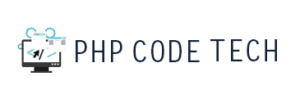India’s Ayushman Bharat Digital Mission (ABDM) is transforming healthcare delivery by creating a robust digital ecosystem. After Milestone M1, where ABHA IDs are generated and verified, the next step (M2) is enabling digital health record sharing through Health Information Provider (HIP) services.
At this stage, the goal is to allow patients’ medical data (such as lab results, prescriptions, discharge summaries, etc.) to flow seamlessly across hospitals, labs, and clinics — but in a standardized, secure, and interoperable way.
Key Requirements in M2
- Link Minimum 7 HI Types
To comply with ABDM, every HIP must support at least 7 Health Information (HI) types like:- Prescriptions
- Discharge Summaries
- Lab Reports
- Diagnostic Images
- Immunization Records
- Clinical Notes
- OPD / IPD Records
Standardizing Medical Data: SNOMED CT & LOINC
To avoid confusion in medical terminology across hospitals and labs, ABDM mandates the use of internationally recognized standards:
- SNOMED CT (Systematized Nomenclature of Medicine – Clinical Terms):
A comprehensive clinical terminology system that provides unique codes for diagnoses, symptoms, procedures, and findings. For example, instead of “heart attack” being recorded differently across hospitals, SNOMED ensures it is standardized with a unique code. - LOINC (Logical Observation Identifiers Names and Codes):
A coding system for lab tests and clinical measurements. For example, a blood glucose test will have the same LOINC code no matter which lab processes it.
Together, SNOMED CT and LOINC make sure that health data is consistent, interoperable, and understandable across different systems.
Creating the FHIR Bundle
Once data is coded with SNOMED CT and LOINC, the next step is to package it into an FHIR (Fast Healthcare Interoperability Resources) Bundle.
- FHIR is a modern standard for healthcare data exchange.
- It organizes data into resources (Patient, Observation, Encounter, etc.) and bundles them for secure transmission.
This ensures that the shared health record is machine-readable, standardized, and compatible with ABDM’s ecosystem.
Securing Data: FEDLIS CLI Encryption
Before health data can be shared with ABDM, it must be encrypted. This is where FEDLIS CLI (Federated Data Layer Interface Service) comes into play.
- FEDLIS encrypts the FHIR bundles.
- It ensures that only authorized parties (with patient consent) can access the records.
- This guarantees confidentiality, integrity, and patient trust.
Why M2 is Crucial
With M2 in place, patients gain control over their health records, and providers can exchange medical information seamlessly. This milestone is the backbone of ABDM’s interoperability promise.
But implementing M2 requires expertise in:
- Mapping hospital/lab data with SNOMED CT & LOINC
- Building FHIR Bundles
- Setting up FEDLIS encryption & HIP APIs
Ready to Implement M2?
I’ve successfully implemented this milestone for healthcare clients and can help you achieve ABDM compliance quickly.
👉 Contact: info@nxstechies.com | 🌐 nxstechies.com
#ABHA #ABDM #DigitalHealthIndia #FHIR #SNOMEDCT #LOINC #HealthTech #EHR #HIPServices

